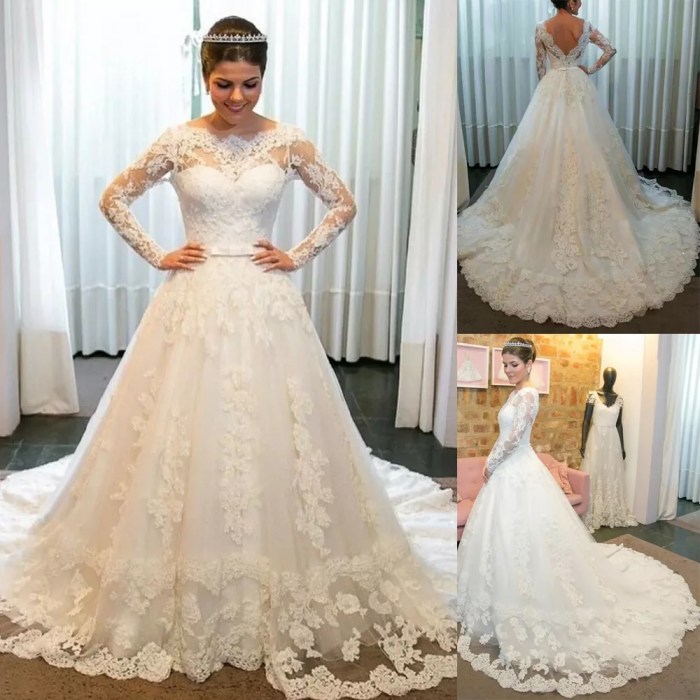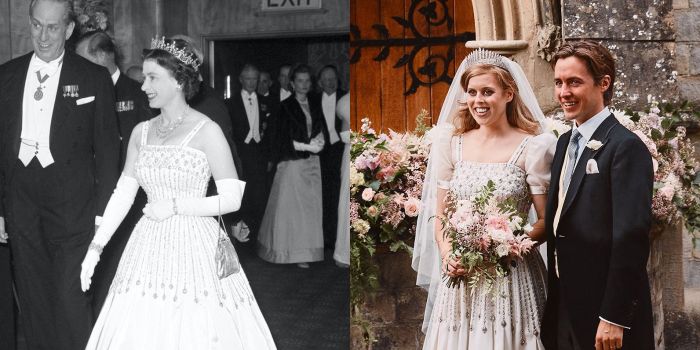Used Vintage Wedding Dresses A Comprehensive Guide
Market Trends in Used Vintage Wedding Dresses
The market for used vintage wedding dresses is experiencing significant growth, driven by a confluence of factors including sustainability concerns, budget considerations, and a desire for unique, one-of-a-kind gowns. This trend reflects a broader shift in consumer preferences towards secondhand and vintage items across various sectors.
Current Market Demand
Demand for used vintage wedding dresses is steadily increasing. This is evidenced by the rising number of online marketplaces and consignment shops specializing in these gowns, as well as the growing popularity of social media hashtags and online communities dedicated to vintage bridal fashion. The market shows strong potential for continued growth as awareness of sustainable and affordable options increases.
Key Demographics
The primary demographics driving this demand include millennial and Gen Z brides, who are often more environmentally conscious and budget-minded than previous generations. They are also drawn to the unique character and style of vintage dresses, seeking a gown that reflects their individual personality and style preferences rather than following mainstream trends.
Price Comparison: Used vs. New
Used vintage wedding dresses typically offer significant cost savings compared to brand-new gowns. While the price of a used dress varies greatly depending on its age, condition, designer, and style, it can often be 50-80% less than a comparable new dress. This affordability makes vintage gowns an attractive option for brides on a budget.
Geographic Variations
The market for used vintage wedding dresses shows geographic variations in terms of price points, popular styles, and overall demand. Larger metropolitan areas with established vintage fashion scenes generally have higher demand and potentially higher prices. Conversely, smaller towns and rural areas may have lower demand but potentially more affordable options.
| Region | Average Price (USD) | Dress Styles | Demand Level |
|---|---|---|---|
| Major Metropolitan Areas (e.g., New York, Los Angeles) | $800 – $3000+ | Variety, including high-end designer gowns | High |
| Smaller Cities/Suburbs | $500 – $1500 | More diverse range, including simpler styles | Medium |
| Rural Areas | $300 – $800 | Simpler styles, often more limited selection | Low |
| International Markets (e.g., Europe) | Variable, potentially higher for European designers | Highly variable, reflecting regional styles | Growing, particularly for specific designer pieces |
Sourcing and Authenticity of Used Vintage Wedding Dresses

Source: ebayimg.com
Finding and authenticating a used vintage wedding dress requires careful research and consideration. Several avenues exist for sourcing these unique gowns, each with its own advantages and disadvantages.
Sources for Purchasing

Source: hearstapps.com
Potential sources include online marketplaces like eBay and Etsy, specialized consignment shops dedicated to vintage bridal wear, estate sales, and even antique shops. Each platform offers a different level of curation and verification, influencing the price and authenticity of the dresses.
Authenticating Vintage Dresses
Authenticating a vintage wedding dress often involves examining its construction, materials, and any accompanying documentation. Features like hand-stitching, specific fabric types, and vintage labels can provide clues to its age and origin. Consulting with a vintage clothing expert can be beneficial for particularly valuable or questionable items.
Risks and Rewards
Buying a used vintage wedding dress presents both risks and rewards. Risks include the potential for damage, alterations needed, and difficulty in finding a perfect fit. However, the rewards include unique style, significant cost savings, and the satisfaction of owning a piece of history. Careful inspection and due diligence are crucial to minimize risks.
Verifying Condition and Quality
Before purchasing, thoroughly examine the dress for stains, tears, damage to the fabric or embellishments, and any signs of significant wear. Consider having a professional seamstress assess the condition and the feasibility of alterations. Request detailed photos from sellers if purchasing online and don’t hesitate to ask questions.
Restoring and Altering Used Vintage Wedding Dresses
Restoring and altering a used vintage wedding dress often requires specialized care and expertise. The process involves a careful balance between preserving the gown’s historical integrity and making it suitable for modern wear.
Cleaning and Preservation, Used vintage wedding dresses
Cleaning a vintage wedding dress should ideally be done by a professional specializing in delicate fabrics and vintage garments. This process usually involves gentle cleaning and stain removal, followed by careful pressing and storage to prevent further damage. Using archival-quality storage materials is essential for long-term preservation.
Common Alterations
Common alterations for vintage wedding dresses include adjustments to the bodice, waistline, hemline, and sleeves to achieve a proper fit. These alterations often require the skills of an experienced seamstress familiar with vintage construction techniques. Major alterations should be approached cautiously to avoid damaging the dress.
Condition Assessment Checklist
Before initiating restoration, a comprehensive checklist should be created to document the dress’s condition. This checklist should include details on the fabric’s condition, presence of stains or tears, the integrity of embellishments, and any signs of previous repairs or alterations. Photographs are helpful for documenting the pre-restoration condition.
Costs of Restoration and Alterations
The costs associated with restoring and altering a vintage wedding dress vary significantly depending on the extent of work required. Factors influencing costs include the dress’s condition, the complexity of alterations, and the seamstress’s expertise and fees. Getting multiple quotes from different professionals is recommended.
Styling and Accessorizing Used Vintage Wedding Dresses
Styling a used vintage wedding dress involves finding a balance between honoring its historical context and creating a modern and personalized look. Careful consideration of accessories, hair, makeup, and footwear can significantly enhance the overall aesthetic.
Styling Options and Mood Board
A 1920s flapper-inspired gown might be styled with art deco jewelry, a sleek bob hairstyle, and pearl drop earrings. A 1950s-style dress could be paired with a classic updo, cat-eye makeup, and elegant gloves. A 1970s boho dress might be complemented with a flower crown, loose waves, and natural makeup. The accessories should enhance the era and style of the dress without overwhelming it.
Matching Vintage with Modern
Vintage dresses can be beautifully complemented by modern accessories. A vintage gown can be updated with contemporary shoes, a modern veil, or statement jewelry. The key is to create a cohesive look that blends old and new elements harmoniously. A delicate modern necklace can add a touch of contemporary elegance to a classic vintage gown.
Hair and Makeup Styles
Hair and makeup should complement the era and style of the vintage dress. A 1920s-inspired hairstyle might include finger waves or a sleek bob, while a 1950s style could feature a victory roll or a classic updo. Makeup should be kept in line with the chosen era, avoiding styles that clash with the overall aesthetic.
Footwear and Jewelry Selection
Footwear should be chosen to enhance the overall look without detracting from the dress. Vintage-inspired shoes or modern heels that complement the dress’s color and style are ideal. Jewelry should be carefully selected to avoid clashing with the dress’s embellishments or overall style. Delicate pieces can add a touch of elegance without overpowering the dress.
Ethical and Sustainable Aspects of Used Vintage Wedding Dresses
Choosing a used vintage wedding dress offers significant ethical and environmental advantages over purchasing a new gown. This choice reflects a growing awareness of sustainability and responsible consumption.
Environmental Benefits
Buying a pre-owned dress reduces the demand for new production, minimizing the environmental impact associated with manufacturing, transportation, and disposal of new garments. This contributes to reducing textile waste and the carbon footprint of the wedding industry.
Economic Impact
The used vintage wedding dress market supports a circular economy, generating revenue for sellers and benefiting businesses involved in restoration and alteration services. This creates economic opportunities within the vintage fashion sector and beyond.
The charm of used vintage wedding dresses lies in their unique history and often exquisite craftsmanship. For a guest attending a wedding, however, a different approach might be needed; consider the vibrancy and elegance of a purple floral wedding guest dress for a stylish and appropriate look. Returning to the bride’s attire, the sustainable choice of a pre-loved vintage gown offers both beauty and eco-consciousness.
Social Implications
Buying and selling used vintage wedding dresses fosters a sense of community and shared experiences among brides. It encourages resourcefulness and creativity, promoting a more sustainable and ethical approach to consumption. Online communities and social media platforms further strengthen these connections.
Sustainability of Sourcing and Restoration
The sustainability of sourcing and restoring used vintage wedding dresses depends on responsible practices. Choosing reputable sellers and ethical restoration services ensures that the dress’s historical value and environmental impact are carefully considered. Supporting local businesses and artisans promotes sustainability within the community.
FAQ Resource
How do I clean a vintage wedding dress?
Professional cleaning is highly recommended for vintage dresses. A specialist in preserving delicate fabrics can safely clean and preserve the gown without causing damage.
Where can I find a vintage wedding dress appraisal?
Antique dealers specializing in clothing or vintage bridal shops often provide appraisals. Some museums or historical societies may also offer this service.
What are the common alterations for vintage wedding dresses?
Common alterations include taking in or letting out seams, adjusting the length, altering the neckline, and adding or removing sleeves.
How can I determine the appropriate price for a used vintage wedding dress?
Consider the dress’s age, condition, designer (if known), fabric, and overall style. Research comparable dresses sold online or in consignment shops to gauge fair market value.





















